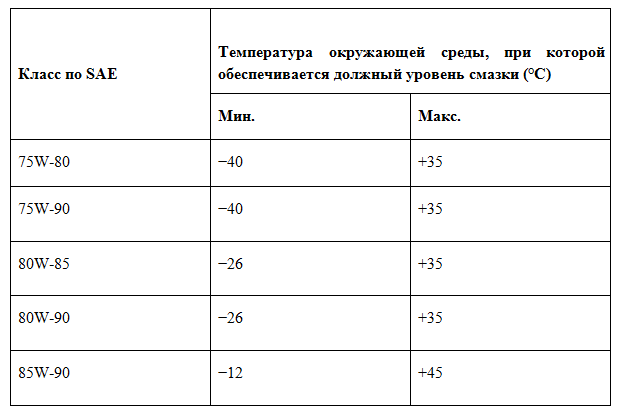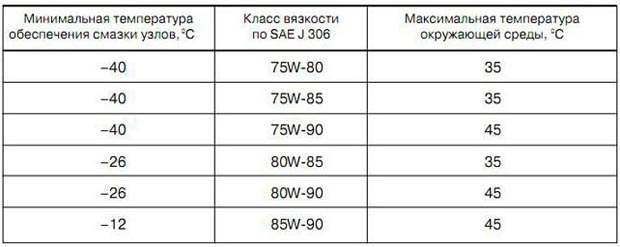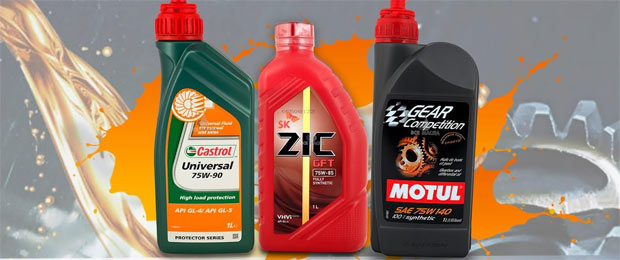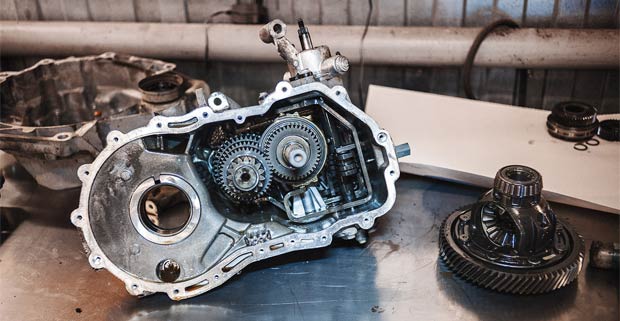
Classification of gear oils
SAE classification
The American Society of Automotive Engineers, by analogy with motor oils, has introduced its own system for separating gear lubricants depending on high and low temperature viscosity.
According to the SAE classification, all gear oils are divided into summer (80, 85, 90, 140 and 260) and winter (70W, 75W, 80W and 85W). In the vast majority of cases, modern oils have a dual SAE index (for example, 80W-90). That is, they are all-weather, and are suitable for both winter and summer operation.
The summer index defines the kinematic viscosity at 100°C. The higher the SAE number, the thicker the oil. There is one nuance here. In fact, up to 100 ° C, modern boxes almost never warm up. In the best case in summer, the average oil temperature in the checkpoint fluctuates around 70-80 ° C. Therefore, in the operating temperature range, the grease will be significantly more viscous than specified in the standard.


The low temperature viscosity defines the minimum temperature at which the dynamic viscosity will not drop below 150 csp. This threshold is conditionally taken as the minimum at which in winter the shafts and gears of the box are guaranteed to be able to rotate in thickened oil. Here, the lower the numerical value, the lower the temperature, the oil will retain sufficient viscosity for the operation of the box.


API classification
The division of gear oils according to the classification developed by the American Petroleum Institute (API) is more extensive and covers several parameters at once. In principle, it is the API class that determines the nature of the behavior of the oil in a particular friction pair and, in general, its protective properties.
According to the API classification, all gear oils are divided into 6 main classes (from GL-1 to GL-6). However, the first two classes are considered hopelessly obsolete today. And you will not find GL-1 and GL-2 oils according to API on sale.


Let's take a quick look at the current 4 classes.
- GL-3. Lubricants operating under conditions of low and medium loads. They are created mainly on a mineral basis. They contain up to 2,7% extreme pressure additives. Suitable for most types of unloaded gears, except hypoid gears.
- GL-4. More advanced oils enriched with extreme pressure additives (up to 4%). At the same time, the additives themselves have increased efficiency. Suitable for all types of gears operating in medium and heavy conditions. They are used in synchronized and non-synchronized gearboxes of trucks and cars, transfer boxes, drive axles and other transmission units. Suitable for medium duty hypoid gears.
- GL-5. Oils created on a highly refined base with the addition of up to 6,5% effective additives. The service life and protective properties are increased, that is, the oil is able to withstand higher contact loads. The scope of application is similar to GL-4 oils, but with one caveat: for synchronized boxes, there must be confirmation from the automaker for approval for use.
- GL-6. For transmission units with hypoid gears, in which there is a significant displacement of the axles (the load on the contact patches is increased due to the increase in the relative slip of the teeth under high pressure).


API MT-1 oils are allocated in a separate category. These greases are designed for extreme loads under conditions of systematic overheating. The composition of additives is closest to GL-5.
Classification according to GOST
The domestic classification of gear oils, provided for by GOST 17479.2-85, is similar to a slightly modified version from API.
It has 5 main classes: from TM-1 to TM-5 (almost complete analogues of the API line from GL-1 to GL-5). But the domestic standard also specifies the maximum allowable contact loads, as well as operating temperatures:
- TM-1 - from 900 to 1600 MPa, temperature up to 90 ° C.
- TM-2 - up to 2100 MPa, temperature up to 130 ° C.
- TM-3 - up to 2500 MPa, temperature up to 150 ° C.
- TM-4 - up to 3000 MPa, temperature up to 150 ° C.
- TM-5 - above 3000 MPa, temperature up to 150 °C.


Regarding gear types, the tolerances are the same as in the American standard. For example, for TM-5 oils, there are similar requirements for use in synchronized manual transmissions. They can only be poured with the appropriate approval of the car manufacturer.
Viscosity is included in the classification of gear oils according to GOST. This parameter is indicated with a hyphen after the main designation. For example, for TM-5-9 oil, the kinematic viscosity ranges from 6 to 11 cSt. The viscosity values according to GOST are described in more detail in the standard.
GOST also provides for additions to the designation, which are situational in nature. For example, the letter "z", written as a subscript next to the viscosity designation, indicates that thickeners are used in the oil.


Watch this video on YouTube
